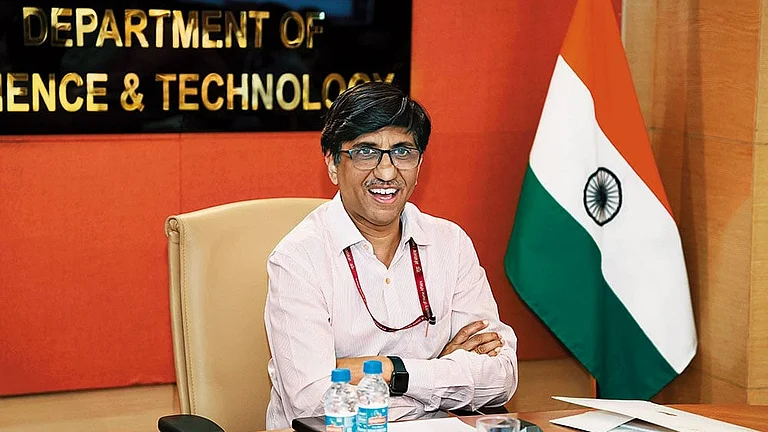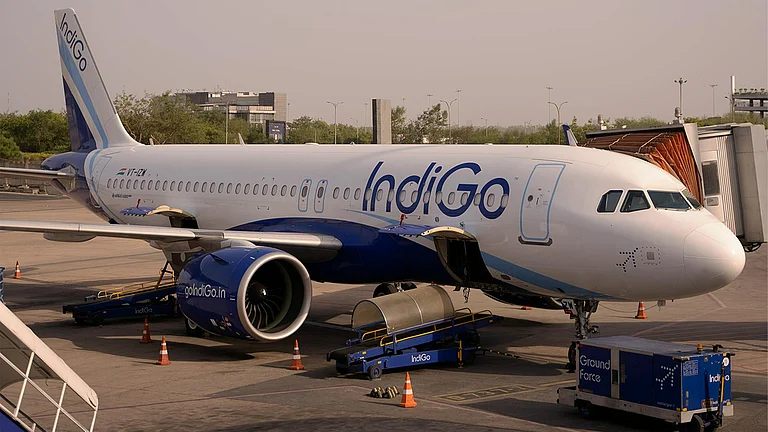As the road snakes out of Hyderabad, the scenery gets progressively greener. The fields spread as far as the eye can see, and about a 100 km northwest of the Nizam’s city, lies Huggelly village in Zaheerabad mandal, Medak district. It is the site of an ongoing project that hopes to bring common sense to agricultural practices, raise crop yield and deliver ‘more with less’ in agriculture. There among the sugarcane crops, farmers voice their opinions on the ‘new’ method taught by Dr Biksham Gujja and his team. “It’s nothing remarkable, just plain common sense,” says Gujja, founder of AgSri, an organisation that helps farmers improve agricultural systems.
In fact, the reactions to the organisation’s methods are so similar it’s become pretty ho-hum. Initially, when AgSri started training farmers on growing seedlings using bud-chips, the first reaction was that this must be a joke.
Farmers who had been growing sugarcane for generations did not believe that a small part of the cane could grow into a plant. A farmer in UP even said, “Since you are telling us we will try it, but we can tell you this won’t work”. A month later, after looking at the healthy plants the same farmer said, “If this is so simple, why were we not told about it before?”
That’s what Gujja is trying to do — educating farmers about scientific methods in agriculture, and offering alternatives to increase productivity. The results are visible at the project site near Hyderabad.
“With SSI, my revenue per acre increased to over₹74,000 from about ₹26,000 using the traditional method,” says Talari Manaiah, a sugarcane farmer. Sustainable Sugarcane Initiative or SSI, a system being spread by AgSri, has made a big difference to the farmers here. The 40-year-old Manaiah has eight acres that he has been tending for the over 15 years. Krishna, a 35-year-old farmer, from the neighbouring Hothi village, agrees with Manaiah. “My revenues per acre more than doubled after I started using the SSI method,” he says.
The genesis
Gujja is a water management expert specialising in conservancy who has worked with multifarious agencies such as the UN, Worldwide Fund for Nature (WWF International) and NGOs. From 1987 to 1992, he was with Deccan Development Society, an NGO working in rural Andhra Pradesh. Then, in 1993, he moved to Gland, Switzerland, with WWF.
Ten years later, in 2003, he led a team of professionals in a WWF-Icrisat project that focused on improving water productivity for major crops such as rice and sugarcane. During this stint, Gujja realised the potential for System of Rice Intensification (SRI) and SSI and how it could make a difference. SRI is a method of rice cultivation that enhances yields besides greatly reduces water requirements, while with SSI one can achieve higher yields using less of seeds, less of water and appropriate use of fertilisers.
In July 2010, Gujja came back “home” to Hyderabad. He was brought up in a village 200 km east of the city. With a seed capital of ₹30 lakh, he set up AgSri, with own money and some funding from his other directors.
‘New’ method
Gujja’s method entails chipping off the bud from a sugarcane plant, growing them into seedlings in coconut pith packed into plastic trays and saving crop from infections. The farmers no longer need to hold back 10-15% of their crop as seed cane — it’s far cheaper to source the seedlings from AgSri because they can also use their farm land and labour to engage in any other cultivation. Though Gujja is quick to add that his method is nothing new and is being practised in some parts of the country, he wants to spread its use across India by educating farmers in the SSI method.
AgSri’s main business is to sell sugarcane seedlings to farmers. These are grown in nurseries where they chip the buds, plant them (unused cane is returned to farmers for milling), and make them available to farmers when they become seedlings at ₹2 per plant. A two-acre plot of land requires at least 10,000 seedlings. While we were in the fields in Huggelly village, the farmers gathered around were requesting him to reduce the price to ₹1 per plant. “I asked them to at least pay us ₹1.50 per seedling so that we could cover our costs,” says Gujja.
The farmers are used to getting most things free of cost or at subsidised rates in Andhra Pradesh, which makes them hesitant about paying the price even if they know it’s for the best quality input. But these are the obstacles that AgSri is trying to overcome by educating farmers and teaching them to become self-reliant.
Money plant
Selling sugarcane seedlings brings in 85% of revenues for AgSri. About 10% of it comes from consulting and balance from drip irrigation and other supplementary technology sold to farmers.
K Sree Kumar, CEO of AgSri, sees significant potential for sugarcane seedlings, given that well over 1.5 million hectares are planted per year. Sugarcane has a cycle of three years, which means a third of the crops have to be planted every year. At present, according to Sree Kumar’s estimates, the organisation is catering to just 0.07% of the potential market.
AgSri runs over a dozen nursery units, and expects to open as many again this year. Each unit can produce about 16 lakh seedlings per year. Given that the sugarcane season lasts about six months in a year, AgSri runs a lean ship with just 35 employees.
In FY12, AgSri implemented (sell the seedlings and help farmers plant those) SSI on 3,000 acres, and promoted it on another 8,000 acres through partners. “AgSri is looking at solid revenue growth since we have almost tripled our growth in FY12,” says Sree Kumar. The company is increasing its coverage by tying up with sugar mills, co-operatives and farmer groups. Forming alliances with sugar mills is an important way to expand since most mills have extensive catchment areas, averaging 10,000 acres each.
India has the second-largest area under sugarcane cultivation in the world; there are about 45 million farmers cultivating the crop over 5 million hectares with over 50 million people depending on this crop. This huge market ensures that AgSri will have plenty of work in future. But for now, the Huggelly farmers are keeping Gujja busy.


























